Chicago Auto Show — best of vanishing breed?
Filed under: Equinox, Autos
By John Gilbert
CHICAGO, ILL.
As February speeds past, car fanciers have until Monday, February 17th to catch a flight or drive to Chicago to get to McCormick Place for the final weekend of the Chicago Auto Show. It remains something of a prize in the diminishing role auto shows are having around the world and in this country.
Those of us in the also-diminishing world of automotive journalists got a chance to attend the preliminary media days last week — two days of previews of what is to come in the public part of the show, last Wednesday and Thursday.
There is not an overwhelming number of new and flashy cars, but certainly enough to keep any car enthusiast on the move for several hours. For highlights, I found the new Ford Mustang Mach E fascinating. Ford has made major headlines about not building cars, eliminating the Taurus, Fusion, Focus and Escort, and continuing on with only the Mustang, and its ever-expanding fleet of trucks and SUVs.
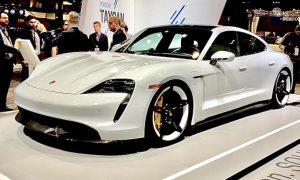
Is it a sports car, or a 4-.door sedan, or an all-electric car? The answer is “Yes,” for the new Porsche Taycan (Photo: Jack Gilbert.)
The Mach E is a pure electric car, and it may hint at how Ford will handle things. Eliminate all those slow-selling cars, and if you want to make an all-new car, go ahead; we’ll just call it a model of the Mustang. The familiar hot-rod pony car remains, of course, in various levels of performance, but the Mach E will be a pure electric car that will run without pistons or valves, using electric rechargeable motors to move on out.
That sets the stage for assorted hybrid and electric models, which even include an all-new Porsche Taycan that blends sports-car, sedan and electric vehicle.
General Motors has pinned its hopes on the flashy new Corvette, with its mid-engine layout, and it has used its considerable promotion and marketing clout to persuade virtually every U.S. entity to name the new Vette as Car of the Year for 2021, despite it being powered by an aging 6.2-liter pushrod V8. Production is just starting on the new Corvette, and it might find its way to showrooms by summertime.
Ford is not resting on its considerable laurels, upgrading the Ford GT, which has It has been around for a decade, and it’s a low-slung, mid-engine, 2-seat sports car, with new power and build-quality called “Liquid Carbon” that will restrict it to only 12 vehicles built per year. Wonder what Henry Ford I would have thought of such elitism. Makes it easy to see what Chevrolet’s real target was for going mid-engine with the Corvette.
We can’t even guess at the car-end of GM’s arsenal, but the SUVs keep on coming. There’s a new Escalade from Cadillac, and midsize Equinox from Chevrolet.
Chrysler, or rather FCA, which is Fiat Chrysler Automobiles, and which has just merged with Renault, to make it a huge and varied conglomerate also goes back to an old familiar nameplate — the Pacifica, which used to be the Caravan. The 2021 Pacifica is coming out in various new forms, including a hybrid, and an all-wheel-drive model that seems made just for us in the Great White North.
Hyundai and Kia are adding to the impressive cars and SUVs they’ve developed, and while the new Sonata gets a hybrid, the Genesis luxury arm of the Hyundai-Kia arrangement adds an all-new luxury SUV, the GV-80.
That will be more than competitive with the newest vehicles from Japan, and from Europe, and all of them are on display at Chicago. The easiest way to tell you what’s there is to show your. My son, Jack, is my trusty photo assistant, and he and I got to just about everything in some way, shape or form, after driving from Minnesota into a blizzard in the Windy City.
So the best way to describe the newest hits of the show is to show them off in photos.
The world of auto shows is undergoing every bit as much upheaval as the auto business this year. Which is plenty. Cars are driving themselves, running silently with electric power, advancing hybrid causes, adding every-more power and handling, and fitting into fewer and fewer cars and more and more trucks and SUVs. And the world’s biggest auto shows — Frankfurt, Los Angeles, Detroit, Chicago, and New York, if you follow the industry closely — are changing just as much.
Meanwhile, the biggest show in the world always has been Frankfurt, and despite having a dozen buildings to house the extravaganza every other year, it will now move to either Berlin or Munich. The Frankfurt show is so impressive it made the world appreciate Frankfurt as something more than a somewhat dreary industrial city. There will be no need to try to promote either Berlin or Munich, two of the world’s most impressive cities.
The result of all this is that the annual February Chicago Auto Show now becomes enhanced as the biggest, from the standpoint of spectators, who will keep clicking the through Monday
Lexus crossovers cross over, add technology
Filed under: Equinox, Weekly test drives, Autos
By John Gilbert
As we gravitate — some would say “hurtle” — from sedans to SUVs for our vehicles of choice, we have now reached a point that obscures the very definitions of those vehicles. Take Lexus, for example, and think about whether you can identify and tell the difference among the Less RX, the Lexus UX, the Lexus GX, the Lexus NX, and the Lexus LX?
I didn’t think so.
On the off-chance you can, then let’s add in the Lexus GS, Lexus ES, Lexus IS, Lexus LS, Lexus LC, and Lexus RC. The above group are all, officially, SUVs, while the lower group is made up of cars.
We are not here to discriminate about model nomenclature, though. We’re here to describe a couple of them and how the compare, if it’s possible to differentiate. First off, Lexus is the upscale or luxury segment of Toyota, and nearly all Lexus models began life as a fancy version of a more mainstream Toyota. As years passed, Lexus got more of the upscale stuff, while Toyota absorbed the more mainstream and less expensive equipment.
I had the chance to road-test a couple of these vehicles, for a week each, and they came back to back. First came the 2020 Lexus NX 300 F Sport , a compact SUV, painted Cadmium Orange, a rich but flashy color that exacts a $595 addition to help push the base price of $40,360 to a final sticker of $51,910. Next came a 2019 Lexus IS 350 AWD sedan, painted Ultrasonic Blue Mica — also worthy of a $595 option price, helping boost the base price from $44,095 to $51,875.
Imagine that! With all the features and add-ons, these two vehicles wind up $35 different, even though they are intended for different worlds of driving. Or, are they? Both are all-wheel drive, both have different but potent engines, different transmissions, and both are F-Sport variations with firmer suspension and special features, with one being a low-slung, sporty 4-door sedan, and the other being a quite-sleek compact crossover SUV, also with four doors, and raised a bit for added room and stature.
Here’s my point: If you live in a rural area in snow country, where the county might plow your road in a day or so, you might want the slightly higher stance of the NX 300; if your driving is mostly or all on well-maintained paved roads and you favor a sporty flair to your driving, the IS 350. Both have all the anticipated contemporary safety features, with lane departure warning and assist, rear camera, blind spot monitor, etc.
An interesting evaluation would indicate the SUV handles like a sports car, and the sleek sedan has some of the capabilities of an SUV.
TC Auto Show to feature Truck Summit
Filed under: Equinox, Weekly test drives, Features, Autos, Uncategorized
By John Gilbert
If you are able to attend any of the world’s major auto shows — such as Frankfurt, Geneva, Paris, Japan, or the Big Four in the U.S., Los Angeles, Chicago, New York and Detroit — the magnitude is amazing. But that doesn’t mean the smaller population centers are any less intense in their interest. And most of them aren’t that small.
That interest in Minnesota will ride a new idea, armed with an impressive economic impact study that shows the auto show may have a financial impact on the region of $19 million every year, with a nine-day run that makes its earnings greater than the Super Bowl or the Final Four.
If you don’t care about the huge congestion at the Big Four shows, you might be able to calm down and enjoy the Twin Cities show., which runs from March 7-15.
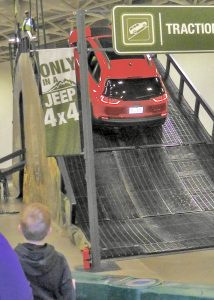
A young enthusiast was mesmerized watching drivers take on the Jeep off-road demonstration at the Twin Cities Show.
My fondest memory of the Twin Cities Auto Show came a few years ago, while taking a pre-opening run through the displays at the Minneapolis Convention Center. There was a Jeep display, where a huge hill had been formed and rides were given to show how steep an incline, and descent, the new Jeeps could handle, which was better than some state fair thrill rides. As I watched the demonstration, there in the foreground was a kid, exactly the kind of kid who might spend his spare time playing with a model truck in his backyard sandbox, and he stood there, transfixed as he gazed at the Jeep going up and over.
That was a couple years ago, and I should have realized then exactly why our country, and particularly our state, had started on a transition from cars to trucks.
It has happened, of course. And when the Twin Cities Auto Show opens March 7, 2020, the focus will be on its Truck Summit on March 6 to break down the reasons for the shift.
There are a lot of other significant vehicles that will fill the huge site, with particular emphasis on the emerging electric car phenomenon that could change the world’s auto industry. But there also will be dozens of trucks, from Ford, Ram, Chevrolet, Toyota, Nissan, Honda for pickups and all the newest SUVs and crossovers being shown by virtually all manufacturers.
We are fast closing in on the start of the U.S. major auto show season, which begins later with the Los Angeles show in late November, and continues with Chicago in February, New York in April, and Detroit in June. The Detroit date is the major departure, because it always has been in early January, but has shifted to summertime.
A lot of people in the auto industry are curious and anxious about that shift, moving the traditional mid-winter Detroit exposition to summer, and the anxiety is because a number of hard-core auto observers are concerned that the once-heralded major shows have faded in the intensity of interest by both auto makers and consumers. The question for us in Minnesota is, where does all that leave us, here in flyover land?
Track driving can’t beat night freeway downpour test
Filed under: Equinox, Weekly test drives, Autos
By John Gilbert
Joliet, Ill.—We poured out of the meeting room after breakfast to look over the rows of new cars we were about to test drive on the private road-racing course at the Autobahn Country Club. That’s when I first spotted the pair of compact SUVs, parked only a few feet apart, and clearly unrelated.
As it turned out, they were two of the most impressive vehicles, in my opinion, of the annual MAMA Fall Rally, held on October 2, 2019. The first one was a low and sleek vehicle, parked next to a flashy Ford Explorer, which itself has been redesigned as a 2020 SUV. But the low, sleek little black one was the new Escape — looking nothing like any Escape we’ve seen in the two decades of its life.
For further evidence, we drove the Escape and found it quick, agile and a treat to drive, around the side-roads surrounding the Autobahn Country Club. I drove it back in, and parked it in exactly the same spot it was, and when I climbed out, I spotted a gleaming white compact SUV — the new BMW X2, which, as a fool could guess, is smaller than an X7, X5, X4, and X3, and larger than the X1. This X2 also was an M35, meaning BMW’s high-performance treatment had imbued it with more power, special suspension, special interior, and everything you might want, if you can afford it, to update it from 2019 to 2020.
Driving the X2 was also a treat, and it would have been our No. 1 pick, except that the Escape was a much more user-friendly price, and you could undoubtedly buy two of them for the price of the X2. So in our ranking, the star of the show was the Escape, and the BMW X2 second. We vote on a “family vehicle of the year” through MAMA, which seeks real-world family virtues in a vehicle, which must also be a 4-door, to preclude racey coupes.
The Midwest Auto Media Association (MAMA) puts on two fantastic shows for its members every year, a Spring Rally at Elkhart Lake, Wis., on the Road America road course, and a Fall Rally at the Autobahn Country Club. That facility, with two complete road courses, is laid out with high-tech maintenance garages adjacent, and it’s just like a golf country club, only instead of playing golf, you come out, work on your favorite car, and go out and drive in on the track. Within reason, of course. The only downside was that the Chicago region was hit by pretty steady rain all day, so we either drove on the nearby roadways, or took it very easy on the race track.
Reporting about cars — and sports, too, for that matter — is a family affair in the Gilbert Household, and Jack, our older son, always accompanies me to the rallies, and was my co-driver down and back from Duluth to Chicago. He also takes photos and gives us two rear ends in the drivers seats and four eyes instead of two to scrutinize the new stuff. He agreed with me that the Escape and X2 were the two show-stoppers, although he would put the BMW first.
The field of vehicles was somewhat restricted this year, with one reason being the arrival of the threats by General Motors and Ford to cut back on cars, in favor of trucks. Also, there seemed to be fewer all-new vehicles among the cars of the world, and we did our best to scare them up.
We drove down in the Lexus ES300h hybrid luxury sedan, and I mentioned in last week’s report that we’d be able to more fully discuss that one after driving it 422 miles from Duluth to Joliet. I had said for most of the week, I had averaged about 32 miles per gallon, and, sure enough, on our trip — watching speed limits and the narrow lanes of road construction closely — we tallied 46.9 miles per gallon for the trip.
Toyota was the sponsor for the breakfast, and showed off its greatly ballyhooed and heavily promoted Supra. Very impressive, and a slick 2-seater that returns the brand to the high-performance sports car scene it seemed to have abandoned. The secret of the Supra is that Toyota collaborated with BMW to build it. BMW still makes an in-line 6, which was the engine of heritage in the previous Supra. There is tremendous power in that inline 6, with 335 horsepower and a torque rating of 365, which peaks at 1,600 RPMs and holds it up through 4,500 RPMs. Not bad for a 3,397-pound car, with 50-50 weight distribution. It starts at $49,995 in base form, but escalates almost as fast as its acceleration with options. Read more
Spacious Palisade Gives Hyundai Luxury SUV
Filed under: Equinox, Autos
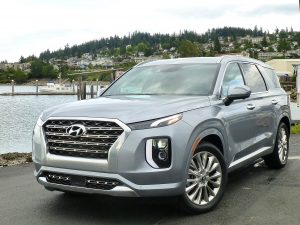
The 2020 Hyundai Palisade made easy work of a trip through the mountains from Coeur d’Alene, Idaho, to Bellingham, Wash.
By John Gilbert
COEUR d’ALENE, Idaho
Hyundai’s SUVs are selling at a fantastic rate, but the company also has heard from consumers with three or more kids: “We want more room.” Even the most loyal Hyundai buyers have to turn to Toyota, Ford or General Motors if they want a larger, three-row SUV, because Hyundai’s fleet consists of midsize and smaller.
Hyundai has swiftly addressed those concerns with its largest SUV, called the Palisade.
A few years ago, I couldn’t have guessed what a Palisade actually is, but living on Minnesota’s North Shore of Lake Superior, you get used to the large, substantial, rock cliffs that rise straight up from the scenic shoreline in a spectacular ridge that runs from Duluth to beyond the Canada border. One of the neatest North Shore tourist sites is the comparatively unknown turnoff to “Palisade Head.” The view from atop Palisade Head is fantastic, and some adventurers bring rock-climbing gear and conduct rappelling exercises over the edge and 200 feet straight down.
“Our vehicle names generally are taken from Southwest or Western locations,” said Mike O’Brien, Hyundai’s vice president of product planning. “This time, we wanted to match the character of a fortress, something substantial. Palisade represents a slice of a cliff, and symbolizes strength.”
O’Brien has never been to Palisade Head, but he was addressing automotive media types summoned in several waves to Coeur d’Alene, a jewel of a mountain resort spot located right in the narrow northern part of Idaho, for the first driving impressions of the 2020 Palisade.
The Palisade replaces the Santa Fe XL as the largest SUV from the South Korean company, and while its bold grille doesn’t resemble anything seen on the Santa Fe, Tucson or Kona, it breaks new styling ground while accumulating all of the almost futuristic features of those smaller siblings, while aiming higher. Hyundai’s history of building safe, strong vehicles that over-achieve is commendable, but now there is a vehicle for those wanting more luxury, and room.
The Palisade could alter Hyundai’s image because of its remarkable luxury fittings. “We’ve focused on premium design and materials,” said O’Brien. “It’s a new image for us.”
However, Hyundai won’t exactly be departing from its reputation of providing high-value, bargain vehicles because of its surprisingly modest price. SUVs with the size and features of the Palisade are often up to twice Palisade’s price, which starts at $31,580 for the base SE. At $33,500, the SEL upgrades to accept all sorts of feature packages that can add another $10,000. The top Palisade Limited model starts at $44,700, and it, too, can add price with some amazing option packages. The Limited I road-tested hit a total of $47,605, but at that its equipment made it pretty special. AWD is standard on the Limited but can be ordered on any model.
“We have strong loyalty to our sedans, like the Sonata, Elantra and Accent, but subcompact SUVs have become the largest segment with midsize SUVs a close second,” said O’Brien. “Sixty-five percent of our total sales come from SUVs.”
With 10 new or substantially redesigned models introduced in the last year, Hyundai has had 10 consecutive months of increased sales over the previous year, and CEO Brian Smith said that while the industry is down 5 percent, Hyundai is up 5 percent.
Our press test-drive included stunning scenery, going more than 100 miles south, to Moscow, Idaho, where we had lunch at the Lodgepole Restaurant — the fish and chips featured Alaskan halibut! — and back, along some scenic, twisty mountain roadways. It was a well-devised route, but I was able to set up a way to get an extended test, after our wave ended at the fabulous Coeur d’Alene Resort.
A Palisade Limited AWD joined me for a memorable daylong drive from Coeur d’Alene westward, past Spokane and then away from the freeway up Hwy. 2 to the Grand Coulee Dam, then to the Chief Joseph Dam, and northward to Winthrop, a neat tourist-intense little Central Washington town, and finally onward, to Bellingham, Wash., and the Pacific Ocean, where I spent a few days visiting our younger son, Jeff. In all, that trip covered 495.5 miles — all on the same tankful of regular gas. I calculated over-EPA 28.1 miles per gallon despite the terrain up, down and through the Cascade Mountains.
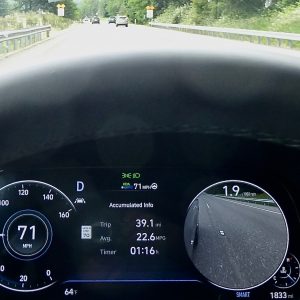
Signal to change lanes, and the speedometer or tach switches to a rear-view camera view of the lane you’re headed for.
Some of the features are refined versions of those Hyundai does very well on such SUVs as the Santa Fe, Tucson and Kona, such as the lane departure warning, lane-keep assist, and lane-centering, plus the excellent radar adaptable cruise control. A new trick is the Palisade’s ultra-helpful instrument panel. If you’re in the middle lane of a 3-lane freeway, and you flick the turn signal to get three blinks to signal a lane change, for example, the large tachometer on the right changes instantly, to a large, round image from a rear/side camera that immediately shows you that the lane is clear. Or not.
Fantastic for entering freeways, too. Otherwise, you can stick with the three-panel navigation screen, which can be adjusted from a panoramic map to a smaller map, with driver information in the adjacent segments.
Another unique feature is the intercom, which lets the driver speak uninterrupted to kids in the back two rows who may have become mesmerized by their audio options. The need for space on the console led to drive-by-wire shift switches instead of the usual shift lever, to save considerable room on the center console. The mode switch allows you to switch from Smart, to Sport, to Comfort, to Eco, or to Snow, and to AWD lock, fitting whatever your driving requires.
Less apparent is the built-in anti-skid control that uses over 50 inputs to predict the conditions for slippage before you actually slip, making it a predictive instead of reactive system. Along with the auto-leveling rear suspension, driving involvement has steering-wheel paddles to control the 8-speed automatic with manual control.
Chief designer Chris Chapman drew a sketch of how the Palisade came to life, to what he calls “personalization” of incorporating a concept into the actual design. As his drawing developed, the key features of the Palisade showed through: balanced on all four wheels, the “C” pillars sloped rearward to the top of the rear wheel-well; the side contours veering away from each other and then meeting again in harmony; the headlights, foglights, driving lights and tail-lights all with an artful design and piercing LED potency; the “shoulders” of the upper sides of the occupant compartment have a minimizing slope to lower the side-window “biceps” just a bit — to put the muscle closer to the wheels, Chapman explained.
“Early on and throughout, that piercing quality became something like an emerging predator, coming up out of the water,” said Chapman.
When a designer gets on a roll, you learn to not interrupt him with needless questions. You simply look for and appreciate the subtle touches, like the three scallops in the rear fascia of the skid plate, with the dual exhaust pipes nestled asymmetrically into the right one.
“It’s a different design,” Chapman acknowledged. “But we’re not doing Russian dolls here, where each one fits inside the other and they all look the same. We wanted to differentiate from the Kona and Santa Fe, and we stressed ergonomics, fit and finish.”
With that, he clicked the projector to replace the Russian dolls pictured with an image of chess pieces, each a different shape and form. The king, of course, is the Palisade.
For structural strength, O’Brien pointed out that the Santa Fe XL graded out to 27.8 in torsional rigidity, and while the all-new Ford Explorer — one of Palisade’s top targets — came in at 27.1, the new Palisade is up to 34.4. To be fair, the 2020 Explorer has 25 percent high-grade steel, but it is aluminum intensive. Hyundai always has featured substantial amounts of high-grade steel, and the Palisade is made up of 59 percent high-strength steel, from Hyundai’s own steel plant. The engineers have found a way to hot-stamp the high-strength steel to improve its rigidity even more.
The Palisade platform is solid enough to feel stiff but not harsh in driving, and rising from that floor is a hoop structure surrounding the passenger compartment, which has been strengthened too. Focus on strengthening the structure included even models with sunroofs, which normally weaken the rigidity. The body was designed to incorporate sound-deadening foam panels under the floor and foam injections into the roof pillars, successful in nearly eliminating wind and road noise.
The low stance and firm structure are coupled with MacPherson strut front and multi-link rear suspensions to handle road fluctuations for the stiff body.
The interior of the Palisade seems closer to full-size than mid-size, but performance of a big SUV is as important as interior space. Hyundai engineering takes care of that, too, with the corporate 3.8-liter V6 delivering 291 horsepower at a peak of 6,800 RPMs, and 262 foot-pounds of torque at 5,200. The price sheet shows it achieves 19 city and 24 highway in EPA fuel economy estimates, but I was able to get it up to 28.1 mpg on my personal trip, up and down mountainsides.
O’Brien explained that the familiar engine has been refined and now combines Atkinson Cycle and Otto Cycle operation, which are opposites in how they adjust valve opening and closing schemes, and they work seamlessly together. “That allows us to get both economy and power,” he said.
The 4,400-pound Palisade AWD also can tow 5,000 pounds in all forms, competing well with the Highlander, Pilot, CX-9, and Explorer. The Explorer is a rear-drive platform, the Palisade front, so when you switch the drive mode to “eco,” you have the efficiency and traction of a front-wheel-drive vehicle. As usual, Hyundai likes to carry its “fight above its weight class” theme, which, because of its interior space, could challenge Yukon, Tahoe, Cadillac SRX and even the Volvo XC-60 and XC-90.
To me, the Palisade drives more like a smaller SUV than one that has so much interior room, and more agility is always a good thing. A unique push-button system makes the second row slide, recline, or flip its backrest forward for ease of entry to the third row, and that third row will surprise adults with how comfortably appointed and roomy it is. It comes with a second-row bench seat, or two captain’s chairs to seat eight or seven. Palisade offers 18 square feet of storage space behind the third row, and it expands greatly when you lower the third, and maybe second, rows.
Many manufacturers are going to assorted artificial leather seat surfaces, and a lot of them are very nice. But the Palisade goes with real Nappa leather, complementing the attention to detail on the doors, dashboard, and even the speaker faceplates is.
With everything folded down, I’m guessing 6-footers could unroll a pad and sleep back there on a long trip. I prefer a resort, but turning the Palisade into a compact mini-motorhome only enhances the pleasure of a trip that could go through the rugged mountains of Idaho and Washington. Or even the North Shore of Minnesota.



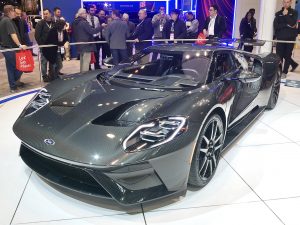
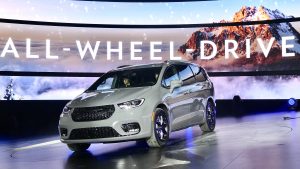
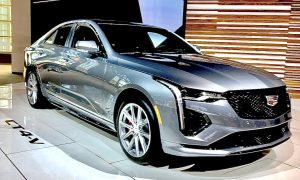
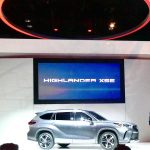
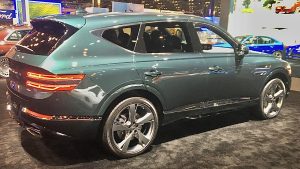
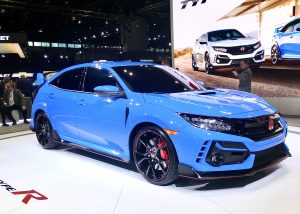
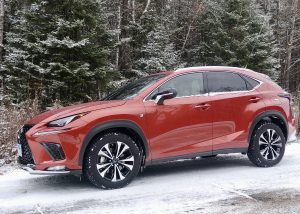
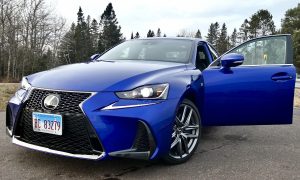
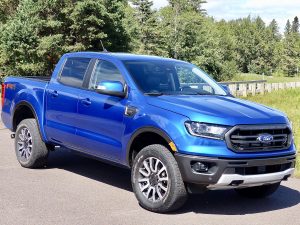
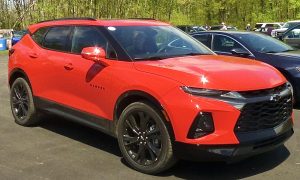
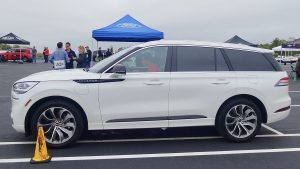
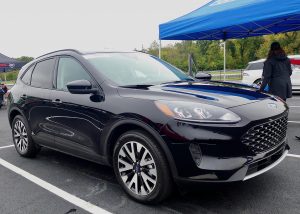
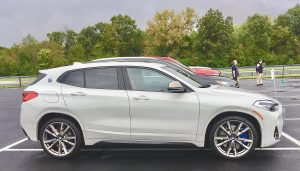
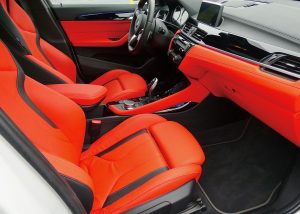
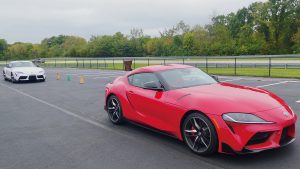
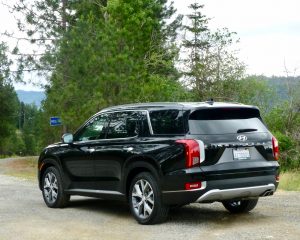
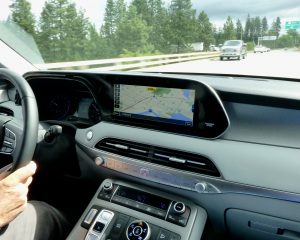
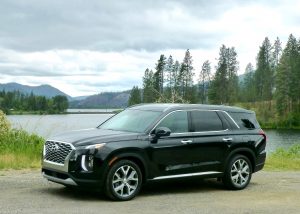

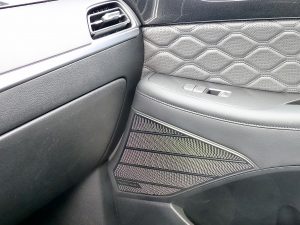

 John Gilbert is a lifetime Minnesotan and career journalist, specializing in cars and sports during and since spending 30 years at the Minneapolis Tribune, now the Star Tribune. More recently, he has continued translating the high-tech world of autos and sharing his passionate insights as a freelance writer/photographer/broadcaster. A member of the prestigious North American Car and Truck of the Year jury since 1993. John can be heard Monday-Friday from 9-11am on 610 KDAL(www.kdal610.com) on the "John Gilbert Show," and writes a column in the Duluth Reader.
John Gilbert is a lifetime Minnesotan and career journalist, specializing in cars and sports during and since spending 30 years at the Minneapolis Tribune, now the Star Tribune. More recently, he has continued translating the high-tech world of autos and sharing his passionate insights as a freelance writer/photographer/broadcaster. A member of the prestigious North American Car and Truck of the Year jury since 1993. John can be heard Monday-Friday from 9-11am on 610 KDAL(www.kdal610.com) on the "John Gilbert Show," and writes a column in the Duluth Reader.